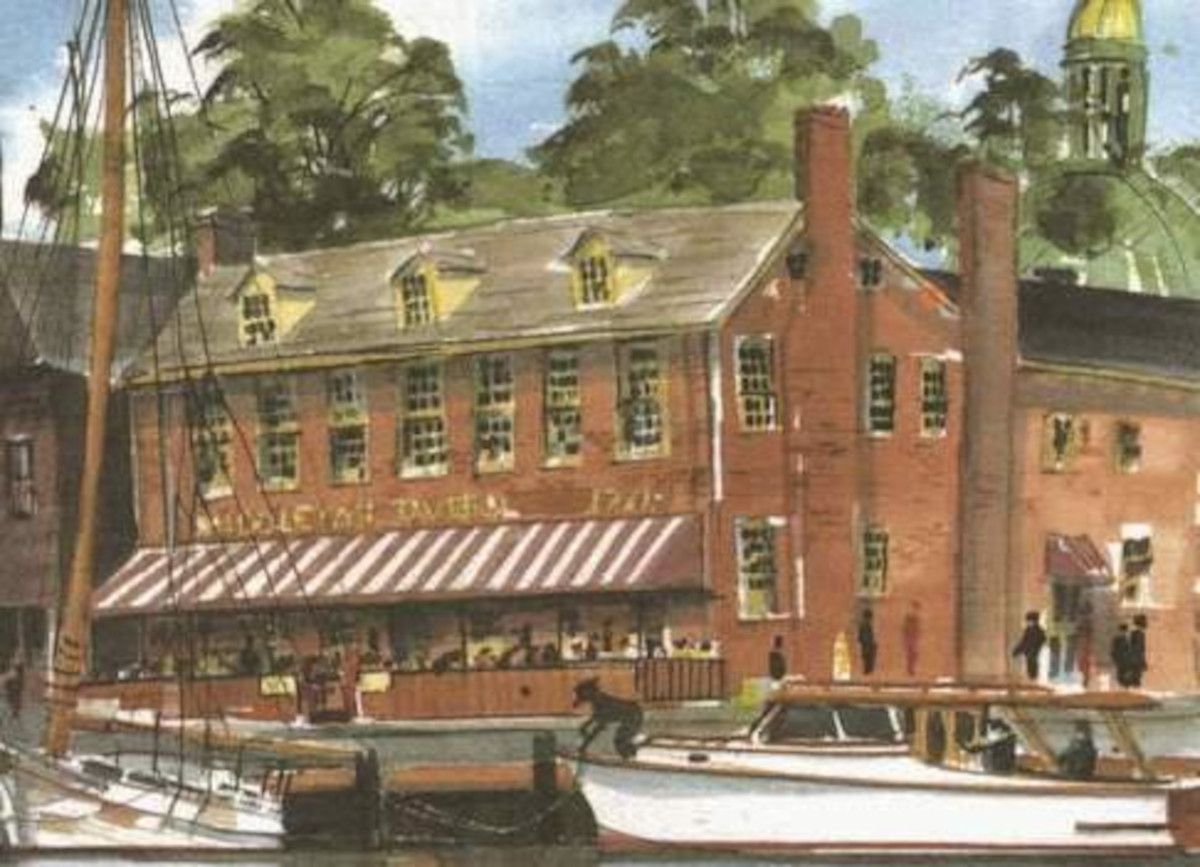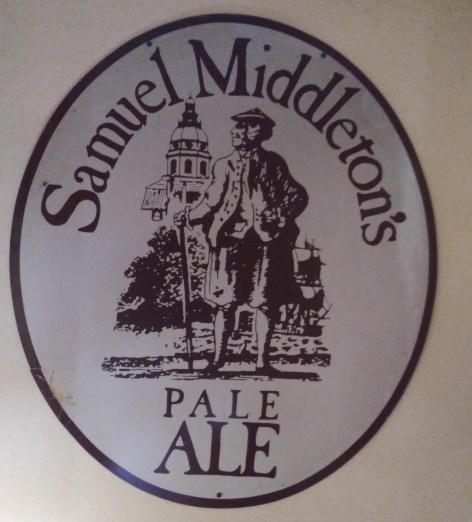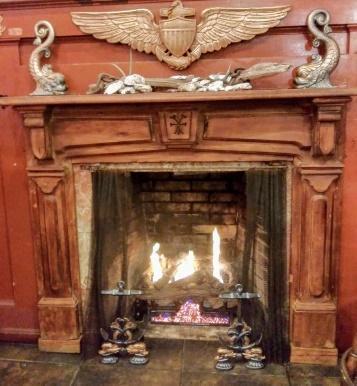Middleton Tavern
Established 1750

Middleton Tavern
-- on Annapolis City Dock
History
Heritage
Hospitality
with the best of Tidewater cuisine
Middleton Tavern Through the Years

This building, which is considered to be classic 18th century Georgian architecture, was probably occupied as early as 1740, when it was owned by Elizabeth Bennett. In 1750, she sold the property to Horatio Middleton. Middleton operated a ferry that sailed between Rock Hall (on the Eastern Shore) and Annapolis. At that time, the law required ferry operators to have lodging for travelers. Thus Middleton Tavern became an inn for seafaring men.
Because the Rock Hall to Annapolis ferry cut many miles (and untold hours) off of the overland route from Philadelphia to Virginia, Middleton Tavern was host to a galaxy of our nation's most revered leaders during the period around the American Revolution. George Washington, Thomas Jefferson and Benjamin Franklin were among its prominent patrons. When Tench Tilghman, the Marylander on General Washington's staff, carried the news of Cornwallis' surrender to the Congress in Philadelphia, he traveled via Middleton's ferry.
Like most colonial taverns, Middleton's was far more than a place to eat and sleep. It was a gathering place and social center of town. It was also somewhat of a showplace, with gardens that stretched from the edge of the water to Prince George Street.
In addition, Middleton Tavern was the site of meetings of the Maryland Jockey Club and Free Masons. It was also the frequent gathering place of the renowned Tuesday Club, a social organization of the City's most enlightened and well-educated gentlemen.
Because the Tuesday Club left such well-documented records of their meetings and members, we have the opportunity to glimpse at what life and social order was like in this community more than 200 years ago.
The building that houses the Middleton Tavern has had many functions throughout the years. During the late 19th century, it was a general store and a meat market. The large black-and-white photographs in the Tidewater Room were taken about this time and give you an idea of what Annapolis looked like around the City Dock. You will note the Market House is also present, along with many of the buildings that have been renovated to make City Dock the delightful shopping and dining area it is today.
The large coffee grinder and cast iron kitchen appliances are vestiges of this era in Middleton's history.
In the early 20th century, the building again became a gathering place as "Tydings' Bar". It was later taken over by the Mandris family of Annapolis and was a restaurant/soda counter/souvenir operation up until the mid- sixties. In 1968, Jerry Hardesty purchased the business and gave it back the proud name it had when Annapolis was the Athens of America. (Attach picture of MT with "confectionary" sign.)
Middleton Tavern today prides itself on giving visitors the same brand of traditional Maryland hospitality and fine cuisine that Samuel himself offered to our Founding Fathers.
About the Decor –
Notice the large rack of herbs on the dining room wall. Herbs played an important part in the lives of early Americans. Not only were they prized as culinary seasonings, they were also valued for their fragrance and beauty. Fashionable ladies of Annapolis always carried a "tussy mussy", or little pouch of fragrant herbs, to cover their noses when they encountered some of the odors of the City.
But perhaps the most significant use of herbs was for their physick, or medicinal, powers. Herbs provided home remedies for a number of ailments. The Shiplap House, just up the street from Middleton's, has a beautiful herb garden that shows the beauty and versatility of these plants. The Paca House Garden also has herb displays.
The leading cash crop of Maryland during the colonial days was tobacco. So valuable was this agricultural commodity that it was used as currency. The rack of tobacco you see on the dining room wall shows how this product is "cured" in ventilated barns before being sold.
If you visit the Tobacco Prise House, just two doors up the street from Middleton Tavern, will see how tobacco was processed and packed for shipping overseas.
The farm tools that grace the walls of the dining room came from lower Anne Arundel County, which is still largely agricultural. Maryland is blessed with a favorable climate and long growing season that permits a great variety of crops to flourish here. For that reason, and because of the fish and wildlife that make their home in the Chesapeake Bay and its marshlands, Maryland has a cuisine unlike any other. It was said that no one living in Colonial Annapolis, no matter what their station in life, need go hungry because they could live like a king on the bounties of the Bay and the rich farmland.
The Great Seal of the State of Maryland depicts the Ploughman and the Fisherman as representative of the State. They symbolize the two industries that made Maryland such a valuable source of trade.
In the Oyster Bar, we pay tribute to the lowly bivalve and the other half of the Maryland Seal, the Fisherman (although here they are invariably referred to as "watermen.")
The framed prints in the Oyster Bar are taken from actual illustrated newspapers of the late 1800's. They depict how oysters were harvested, packed and served during this period. It was at this time that oysters were at their height of popularity for fashionable dining.
About the John Shaw Flag –
The Governor and Council of Maryland commissioned flags to fly over the State House and the Governor's Mansion when the Continental Congress met in Annapolis from November 1783 to June 1784.
As there was still no "official" flag for the fledgling nation, John Shaw, the local cabinetmaker who was the State House engineer, created a design based on the mandated 13 stripes and 13 stars on a field of blue.
Although no drawings remain of John Shaw's flag, this design was recreated based on receipts for materials and other notes found in the Hall of Records. Note that there are seven white stripes and six red, rather than the combination we use today. It also has 8-pointed stars (rather than 5-pointed) which were more popular at that time and is more elongated than the standards that are flown today.
Annapolis has more 18th century structures remaining than any other place in the United States. When the Bicentennial of the Treaty of Paris (which ended the American Revolution) was celebrated in January of 1984. Many of these buildings (including Middleton Tavern and John Shaw's home on State Circle) flew the John Shaw flag in commemoration. It was indeed a glorious sight and we were as proud as Samuel Middleton must have been that day many years ago.
Middleton Tavern Today
Even before the American Revolution, Middleton Tavern was a popular gathering place for local gentry, seafarers, watermen and travelers to the colonial capital.
It was known for excellent food, drink, music, games and merriment... And so it is still today (although Keno, RaceTrax, and Trivia have placed whist.)
Enjoy the warmth of the original colonial fireplaces or a dockside view on our sidewalk cafe.


Anchors, wings & mythical dolphins honor our Naval Academy neighbors.

EMMA GILES
From 1750 on, the building has been a butcher shop, general store, provisioner and mainstay of the Annapolis City Dock. It is all represented in Middleton Tavern, along with the same hospitality and fine Tidewater cuisine our forefathers enjoyed.

Middleton's mussels voted "Annapolis Best" year after year.
Middleton Tavern offers Tidewater cuisine that Maryland is famous for, with rockfish served every day, an Oyster Bar with freshly steamed or shucked shellfish, and an array of crab dishes.


LET'S PLAY!!
Gaming at Middleton Tavern was popular during Colonial times, when our neighbors gathered for friendly games of whist by the fireplace or wagered on upcoming horse races on West Street.
This tradition carries on in our Oyster Bar, where you can win playing Keno, betting on horses (a George Washington favorite) with RaceTrax, or testing your mettle at Monday night Trivia.



Musical Merriment
Live music is a mainstay at Middleton's, with bands every weekend, acoustic guitar every Wednesday, and our rollicking Piano Bar upstairs on Friday and Saturday nights. Make requests, sing along, and enjoy the fireside comradarie overlooking Market Square.


Specialties of the Bar
ORANGE CRUSH
Long recognized as a popular summer slush, the Orange Crush became the official Maryland State Cocktail in 2025.
We enjoy it year-round at Middleton Tavern. Try one for brunch, on the cafe, or simply to celebrate being in Annapolis.
Created sometime in the 70's on an Ocean City dockside, the Orange Crush consists of freshly squeezed orange juice, orange vodka and triple sec- poured over ice in a beverage glass or stadium cup topped with Sprite and garnished with an orange slice.

PICKLED BLOODY MARY
Spice up your brunch! Our spicy concoction is topped with house pickled veggies for a tangy twist.
Try is as a Bloody Maria with Milagro Tequila for an extra kick
WORLD FAMOUS OYSTER SHOOTER
"Shuck 'n' sauce 'em ~ Suck 'n' toss 'em"
The Oyster Shooter was created by Jerry Hardesty more than 50 years ago. Through the years, a number of establishments have created their own versions, but nothing can top this Chesapeake Bay original.
The ingredients are a closely guarded secret, known only to Chef Arthur, who personally concoction the sauce. The process, however, is key to enjoying this world-renown delicacy.
Your bartender starts by shucking fresh oysters to order. To this, the special sauce is added in a shot glass. A shirt Natty Boh draft is added on the side.
The rest is up to you. Gently swirl the oyster and sauce together, then slowly sip. Savor the flavor on your tongue. Chew the oyster, or swallow it whole before chasing it with the beer.
Some folks prefer steamed shrimp, also prepared fresh and peeled, in the sauce. Either way, it goes great with the beer!



